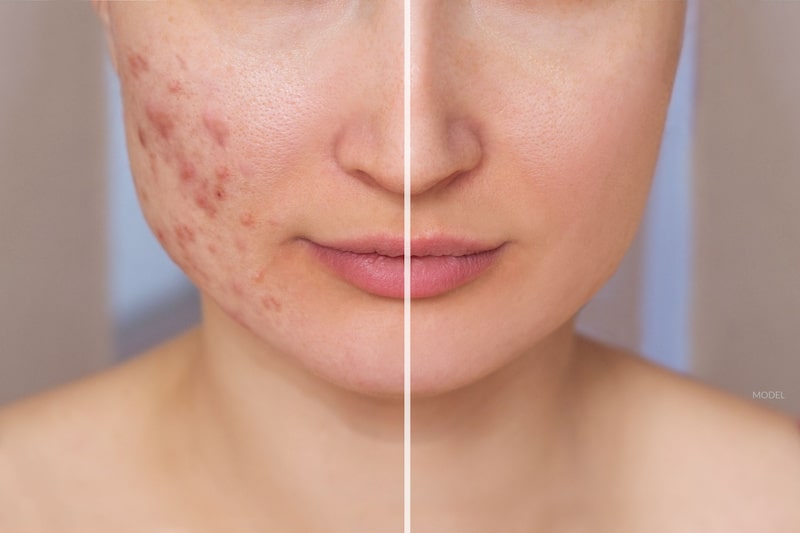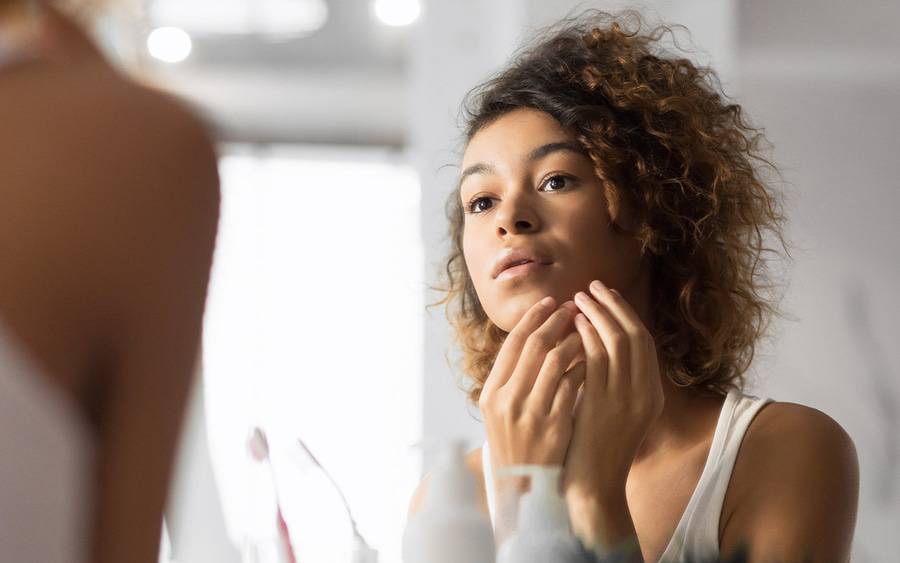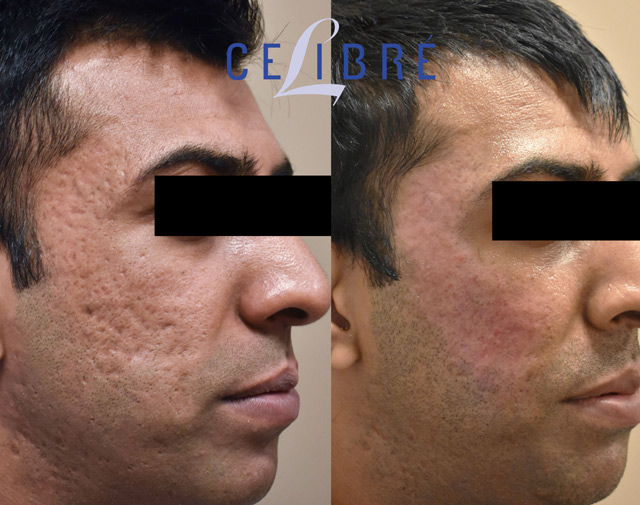Advanced Acne and Acne Scars Treatment: Say Goodbye to Imperfections
Advanced Acne and Acne Scars Treatment: Say Goodbye to Imperfections
Blog Article
Understanding the Various Skin Problem and Reliable Therapy Alternatives for Acne Marks
Acne scars represent an intricate interaction of skin problems that substantially impact individuals' self-esteem and general skin health and wellness. As we explore the landscape of acne mark monitoring, it comes to be obvious that the trip toward clearer skin might entail even more than just topical services.
Kinds Of Acne Scars
The two main groups of acne scars are hypertrophic and atrophic scars. These scars are more identified right into three subtypes: ice choice marks, which are deep and narrow; boxcar marks, which are broader and have distinct sides; and rolling marks, which develop a wave-like appearance due to irregular skin structure.
On the other hand, hypertrophic marks arise from an overproduction of collagen throughout the recovery process, leading to raised areas on the skin. These marks are frequently solid and can differ in shade, sometimes showing up red or darker than the surrounding skin.

Causes of Acne Scarring
Marking happens as a result of the body's all-natural healing response to inflammation and injury triggered by acne sores. When acne kinds, it causes an inflammatory reaction, resulting in the release of various cytokines and development aspects that advertise recovery. This procedure can often lead to too much tissue formation or poor repair work, resulting in marks.
The main causes of acne scarring include the seriousness of the acne itself, duration of the sores, and specific skin types. Extreme inflammatory acne, such as cysts and nodules, is most likely to result in scarring as a result of much deeper tissue damages. Furthermore, improper handling of acne sores, such as squeezing or choosing, can intensify cells injury and swelling, increasing the chance of scarring.
Genetic tendency also plays a considerable function; individuals with a household history of scarring go to a higher risk. In addition, skin type and shade can affect scar formation, as darker skin tones might experience post-inflammatory hyperpigmentation, while lighter skin may create atrophic scars.

Therapy Choices for Scarring
Efficient therapy choices for acne scarring vary depending upon the type and seriousness of the scars. Typically classified right into atrophic, hypertrophic, and keloid scars, these problems require tailored strategies for ideal results.
For atrophic marks, which are characterized by a loss of cells, treatments such as chemical peels, microdermabrasion, and laser treatment are typically employed. These methods promote skin revival and stimulate collagen production, consequently enhancing skin texture. Subcision, a minimally invasive treatment, can additionally work by separating fibrous bands beneath the skin.
Keloid and hypertrophic scars can be much more testing to treat. Options consist of corticosteroid shots to reduce inflammation and squash the scars. acne and acne scars treatment. Sometimes, cryotherapy or laser treatment may be advised to reduce their appearance
Surgical options are available for serious scarring, where excision or skin grafting may be needed. It's important for individuals to talk to a skin doctor to evaluate their certain scar type and go over the most ideal therapy plan. Combining several treatments usually generates the very best results, ensuring that each client's one-of-a-kind skin description disease is attended to properly.
Natural Home Remedy and All-natural Solutions
Natural remedies and natural home remedy can offer an available technique for people looking for to boost the look of acne scars. Numerous components found in the home kitchen have demonstrated prospective benefits in boosting skin structure and advertising healing.
Applying fresh aloe vera gel directly onto the marks can help improve skin hydration and reduce redness. Honey has all-natural anti-bacterial and moisturizing top qualities that can assist in scar healing.
An additional efficient alternative is lemon juice, which acts as an all-natural exfoliant and can lighten hyperpigmentation. However, it should be made use of cautiously, as it might trigger photosensitivity. Oat meal masks are likewise helpful; their gentle peeling can aid eliminate dead skin cells while calming irritability.
Important oils, such as tea tree oil and lavender oil, can better support scar healing because of their antimicrobial buildings. It is crucial to perform a patch test before using any solution to make certain there are no adverse responses. These natural remedies can be a complementary strategy in the trip to reduce acne marks.
Avoiding Future Scarring
Taking on a positive approach to skincare can substantially decrease the risk of establishing future acne marks. Normal see page cleansing, exfoliation, and hydration can aid keep skin health and wellness and prevent stopped up pores.
Additionally, preventing the temptation to press or choose acne sores is important, as this can result in swelling and subsequent scarring. Rather, people need to focus on applying topical treatments that advertise recovery and reduce inflammation. Components such as salicylic acid, benzoyl peroxide, and retinoids are known for their efficiency in handling acne and minimizing scars.

Lastly, keeping a healthy diet abundant in antioxidants and remaining hydrated supports skin regrowth. By implementing these preventative steps, individuals can substantially reduce their threat of future scarring and advertise general skin wellness.
Final Thought
In final thought, a detailed understanding of acne marks, encompassing both atrophic and hypertrophic types, is necessary for efficient treatment techniques. Assessment with a skin specialist continues to be critical to devise individualized approaches that consider individual skin types and scar severity, eventually enhancing the efficacy of scar monitoring methods.
Acne marks stand for a complicated interaction of skin conditions that considerably influence individuals' self-worth and total skin wellness. The two main groups of acne marks are hypertrophic and atrophic marks. These marks are more categorized into 3 subtypes: ice pick marks, which are deep and narrow; boxcar scars, which are bigger and have well-defined edges; and rolling scars, which produce a wave-like appearance due to unequal skin appearance.
An extensive appointment with a skin doctor can help establish the most suitable intervention, taking into account the individual's skin kind, mark intensity, and general skin health.
Examination with a dermatologist remains vital to design personalized approaches that think about specific skin types and mark intensity, eventually enhancing the efficiency of mark management strategies.
Report this page